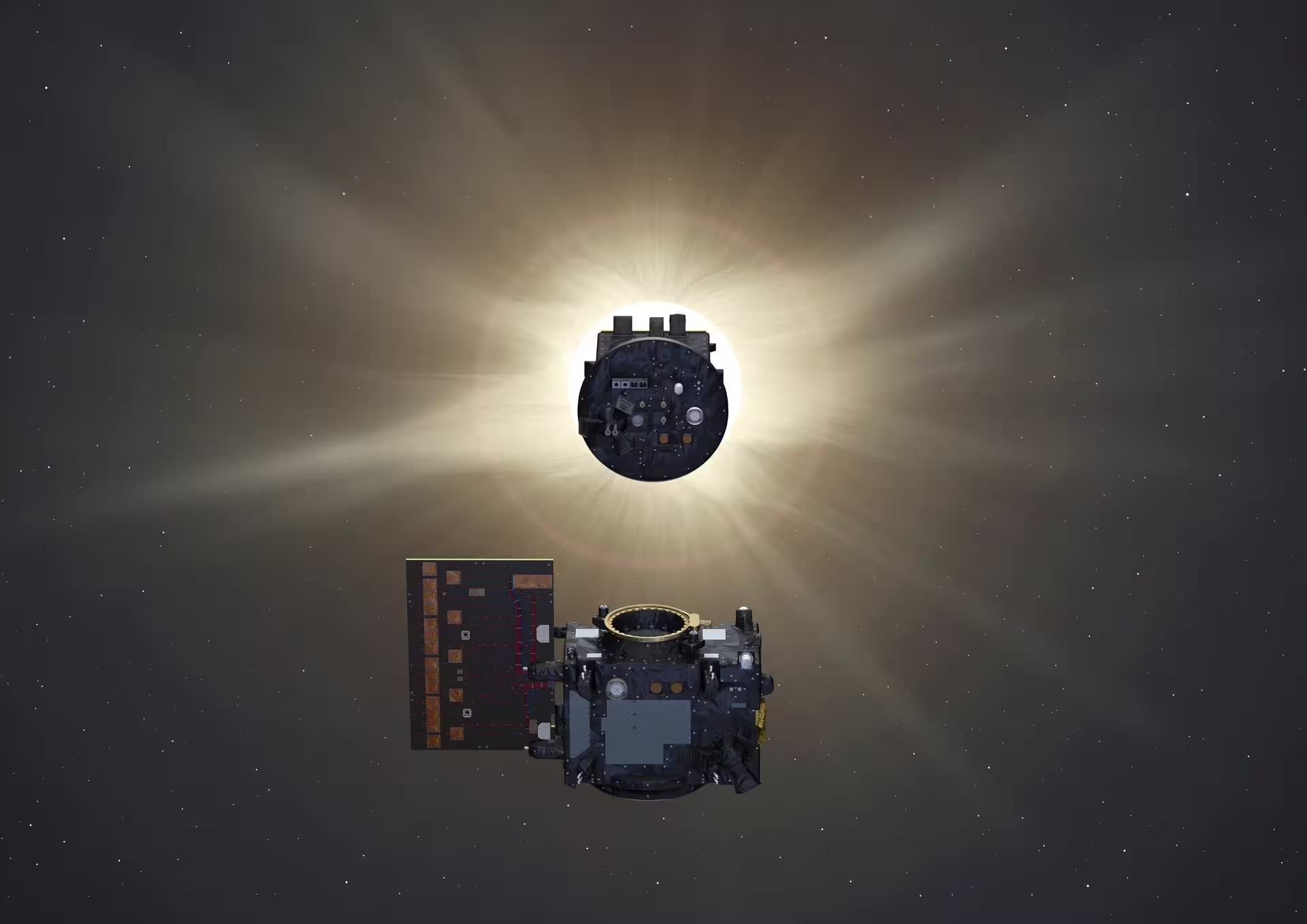4 Minutes
For decades, solar scientists and astronomers have sought safe and innovative approaches to uncover the mysteries of the Sun. The intense brightness and heat emitted by our star make direct observation both hazardous and technically difficult, especially when attempting to study the Sun's elusive corona. While creating an artificial solar eclipse on Earth can be as straightforward as placing an object between your eyes and the Sun, replicating this phenomenon in space to reveal the Sun’s outer atmosphere has required cutting-edge engineering and international collaboration.
The Proba-3 Mission: Precision-Orchestrated Spacecraft Formation
Enter Proba-3, the European Space Agency’s (ESA) pioneering mission, designed specifically to capture unprecedented views of the solar corona. Launched in December last year from India’s Satish Dhawan Space Centre, Proba-3 is comprised of two independently controlled spacecraft—the Coronagraph and the Occulter. This mission represents the collaborative effort of 29 aerospace organizations across 14 countries, including industry leaders like Airbus, Redwire, and Spacebel.
Groundbreaking Technology: How Proba-3 Works
The operation of Proba-3 is both conceptually simple and technically extraordinary. The pair of satellites travel in a precisely controlled formation, separated by 150 meters (492 feet) in orbit approximately 60,000 kilometers (37,282 miles) away from Earth. The Occulter spacecraft moves directly in line with the Sun, its 1.4-meter (4.6-foot) disk completely blocking the Sun's dazzling face as seen from the perspective of the Coronagraph satellite. This creates an artificial total solar eclipse, allowing the Coronagraph’s sensitive instruments to observe the normally hidden solar corona in remarkable detail. Achieving this feat required millimeter-level accuracy in formation flying—accomplished entirely autonomously while the craft hurtled through orbit. Notably, the Proba-3 team maintained this extremely precise alignment for hours at a time, all without direct ground intervention.

Scientific Instruments and Early Discoveries
Central to Proba-3’s success is its advanced imaging device, ASPIICS (Association of Spacecraft for Polarimetric and Imaging Investigation of the Corona of the Sun). ASPIICS captures high-contrast, detailed images of the corona by leveraging the Occulter’s shadow to minimize stray sunlight. According to research teams, this enables the detection of fainter and more subtle features than conventional space-based coronagraphs have ever managed. The mission has already yielded the first artificial solar eclipse in space and released breathtaking images of the solar corona—revealing structures and dynamic processes never before observed in such clarity.
Expanding Scientific Capabilities
Besides ASPIICS, Proba-3 carries additional state-of-the-art instruments. The Digital Absolute Radiometer (DARA) is set to measure the total solar irradiance, quantifying the Sun’s energy output with high precision. Meanwhile, the 3D Energetic Electron Spectrometer (3DEES) will examine the population of energetic electrons in Earth's radiation belts, mapping their direction and energy.
Implications for Solar Physics and Space Weather
The insights gained from Proba-3 are expected to significantly advance our understanding of key solar phenomena. By acquiring detailed imagery of the corona, scientists can investigate the driving mechanisms behind solar wind, coronal mass ejections, and, most intriguingly, the mystery of the corona’s extreme temperature—measured at over a million degrees Celsius, vastly hotter than the Sun's visible surface. These findings are crucial for refining models of solar activity and predicting space weather events that can impact satellites, communications, and power grids on Earth.

Autonomy and the Future of Space Missions
The remarkable autonomous formation flying demonstrated by Proba-3 marks a leap forward for mission architecture in deep space. ESA reports that future operational windows will expand, with the two satellites aiming for up to six hours of continuous solar observation during each 19.6-hour orbital period. While formation control was initially performed with ground oversight, upcoming experiments will further push the autonomy envelope, operating entirely without human intervention.
Conclusion
The successful creation of the world’s first artificial total solar eclipse in orbit positions ESA’s Proba-3 as a landmark mission in solar science and spacecraft engineering. Not only has it rendered the Sun’s corona visible with stunning new detail, but it also sets the stage for future breakthroughs in understanding solar physics and protecting our technologically dependent society from solar-driven space weather. As Proba-3 continues its ambitious observation program, its discoveries promise to illuminate some of the Sun’s most enduring enigmas. The spectacular images already captured offer both a scientific and visual testament to the ingenuity of international cooperation and technological innovation in modern space exploration.
Source: autoevolution



Comments